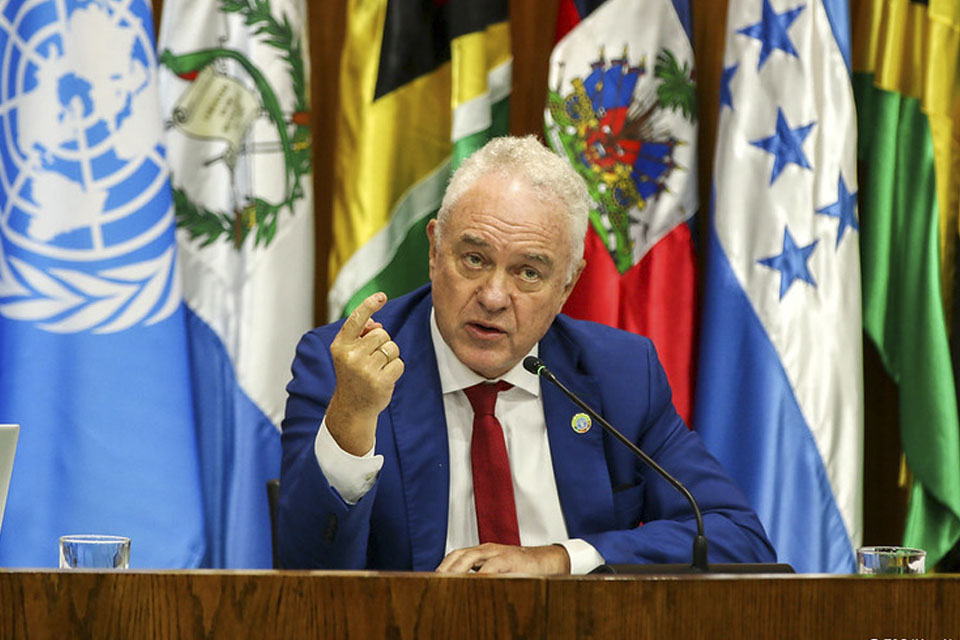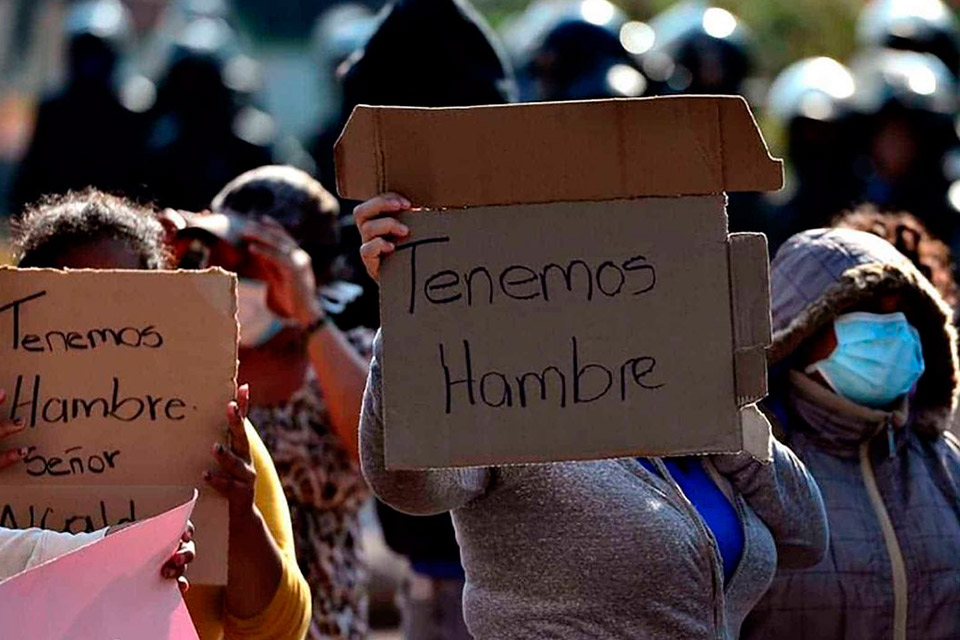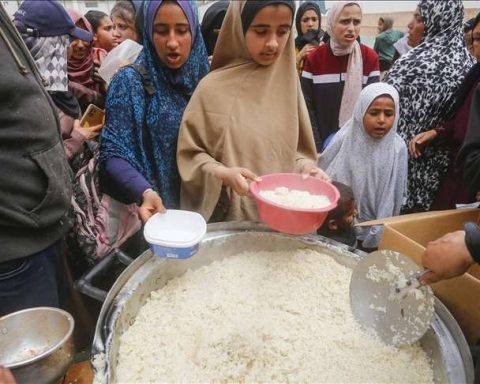An FAO report on food and nutrition security for 2022 indicates that 131 million people in Latin America and the Caribbean cannot access a healthy diet. The region was indicated to have the highest cost compared to the rest of the world, reaching $3.89 per person per day, while the world average is $3.54. Malnutrition in Venezuela reaches 4.1% of the population
A new report from the Food and Agriculture Organization of the United Nations (FAO) «Panorama of Food and Nutrition Security 2022″ ensures that 22.5% of people in Latin America and the Caribbean do not have sufficient means to access a healthy diet. In the Caribbean, 52% of the population has been affected by this situation, in Mesoamerica this number reaches 27.8% and in South America 18.4%.
The post reports that 131.3 million people in the region could not afford a healthy diet in 2020. This represents an increase of 8 million compared to 2019, and is due to the higher average daily cost of this type of diet in Latin America and the Caribbean compared to the rest of the world regions, reaching a value of 4 in the Caribbean. .23 dollars, followed by South America and Mesoamerica with $3.61 and $3.47, respectively.
The lack of economic access or affordability of a healthy diet observed throughout the region is also associated with different socioeconomic and nutritional indicators. The report presents a clear relationship with variables such as the income level of a country, the incidence of poverty and the level of inequality.
Venezuela in this panorama shows an increase in the number of undernourished, hungry, malnourished Venezuelans and with little access to food items. The FAO was unable to assess the impact of the rise in prices on the population because it did not have official data for 2022. The last data provided by the Central Bank of Venezuela (BCV) was in October of last year.
The report also revealed that the increase in international food prices experienced since 2020, especially after the start of the conflict in Ukraine, and the rise in food inflation, which is above the general rate, have increased the difficulties so that people can access a healthy diet.
The report also includes policy analysis and recommendations to improve the availability and affordability of nutritious food, primarily to support the most vulnerable people and low-income households that spend a greater proportion of their budget on food.
“No single policy can provide the solution to this problem. It is necessary to strengthen the national and regional coordination mechanisms to respond to hunger and malnutrition”, said Mario Lubetkin, deputy director and regional representative of FAO for Latin America and the Caribbean.
Lubetkin argued that in order to contribute to the affordability of healthy diets, it is necessary to create incentives for the diversification of the production of nutritious foods aimed mainly at family farming and small-scale producers, measures for the transparency of the prices of these foods in markets and commerce, cash transfers and other actions such as improving school menus.

Hunger
Between 2019 and 2021, the number of hungry in the region increased by 13.2 million, reaching a total of 56.5 million hungry people in 2021, situation that was also affected by the impact of the pandemic caused by covid-19. An increase led by South America, where an additional 11 million people suffered from hunger. Between 2019 and 2021, hunger reached a prevalence of 7.9% in South America, 8.4% in Mesoamerica, and 16.4% in the Caribbean.
The largest number of people affected by hunger in the Caribbean is in Haiti. Almost half of its population (47.2%)—around 5.4 million people—was undernourished. By comparison, the prevalence of undernourishment at the other end of the spectrum was around 7% in Dominica, Jamaica, the Dominican Republic, Saint Vincent and the Grenadines, and Trinidad and Tobago.
In Mesoamerica, Nicaragua was the country with the highest prevalence of undernourishment (18.6%) in the 2019-2021 period, followed by Guatemala (16%) and Honduras (15.3%). Which is equivalent to almost 5 million hungry people in these three smallest countries (1.2, 2.9 and 1.5, respectively). In Mexico, the largest country in the subregion, the prevalence of undernourishment was 6.1% (7.8 million people).
In Southamerica, Venezuela had the highest prevalence of undernourishment (22.9%), which in absolute numbers is equivalent to 6.5 million people; followed by Ecuador with 15.4% (2.7 million) and Bolivia with 13.9% (1.6 million). In Colombia, Paraguay, Peru and Suriname the prevalence exceeded 8%. It should be noted that Brazil, a highly populated country, had one of the lowest rates in the region (4.1%), but the largest number of undernourished people (8.6 million).
A look at the hunger trends in the countries of the region shows that hunger increased significantly by 18.4 percentage points, that is, 5 million more hungry people between the periods 2013-2015 and 2019-2021. In these periods, hunger increased 6.7 percentage points in Ecuador (1.3 million), 4.6 percentage points in Haiti (900,000) and 1.6 percentage points in Brazil (3.4 million more people).

More from Venezuela
The UN report pointed out that in Latin America and the Caribbean, the prevalence of wasting or acute malnutrition is 1.3% (equivalent to 0.7 million children under five years of age), significantly lower than the world average. of 6.7%. Regarding the subregions, in 2020, the Caribbean had a slightly higher rate of 2.8%, that of South America was 1.4% and in Mesoamerica the rate was less than 1%.
If these levels are maintained, the region is on track to reach the goal of keeping acute malnutrition below 3% of the child population.
The countries with levels of wasting or acute malnutrition above 3% are Barbados (6.8%), Trinidad and Tobago (6.4%), Guyana (6.4%), Suriname (5.5%), Venezuela (4.1%) and Ecuador (3.7%). “The effects of the covid-19 pandemic on malnutrition have not yet been fully revealed. Global projections on wasting or acute malnutrition indicate that between 11.2 and 16.3 million more boys and girls under five in low- and middle-income countries could be affected between 2020 and 2022.”
Regarding moderate or severe food insecurity, in 2021 40.6% of the regional population experienced this situation, compared to 29.3% of the population worldwide. Severe food insecurity is also more frequent in the region (14.2%) than in the world (11.7%).
Other figures presented in the report indicate that the region registers an important evolution regarding the prevalence of chronic malnutrition in children under 5 years of age. In 2020, this figure was 11.3% in Latin America and the Caribbean, approximately 10 percentage points below the world average. Nevertheless, 3.9 million children up to 5 years of age are overweight.
“In order for boys and girls to grow up healthy, it is not only urgent to ensure the availability of nutritious food at affordable prices. It is also necessary to develop public policies that guarantee adequate nutrition, in addition to nutritional counseling, focusing actions on the most vulnerable populations,” said Garry Conelli, UNICEF regional director for Latin America and the Caribbean.
nutrition labeling
Other food policies, such as nutrition labeling, nutritious food subsidies and the application of taxes on foods of high energy density and low nutritional value that do not contribute to healthy diets, if they are well designed, could play a role in making healthy diets affordable and preventing other diseases related to overweight and obesityreflected the FAO report.
“We must redouble efforts to address malnutrition in all its forms by promoting public policies to create healthy eating environments, eliminate industrially produced trans fats, implement front-end warning labeling, regulate advertising of unhealthy foods, establish taxes on sugary drinks, and support policies for healthy eating and physical activity in schools,” said PAHO Director Carissa F. Etienne.
In this regard, the document highlights that 10 countries in Latin America and the Caribbean have enacted laws or regulations in this regard. Seven of these countries have implemented or are in the process of implementing, nutritional warnings with black octagons (Argentina, Chile, Colombia, Mexico, Peru, Venezuela and Uruguay). While Ecuador has a traffic light system, it is not necessarily placed on the front of the container; Brazil will apply a system with black rectangles and a magnifying glass; and Bolivia has approved a traffic light system, but has not yet implemented it.
*Read also: Unicef: Poorer students benefit less from public education than the rich


















